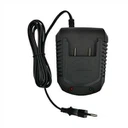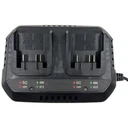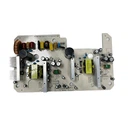Contact Us
- No.31 Xianghong Road, Xiang'an Distrcit, Xiamen City, Fujian Province, China
- echo-wang@eahunt.com
- +86-592-7616732

Eahunt Chargers Power Supply Adapters
An adapter is an interface converter, which can be a stand-alone hardware interface device that allows hardware or electronic interfaces to be connected to other hardware or electronic interfaces, or it can be an information interface. Examples include: power adapters, tripod base adapter...
Description
Trickle Charge: The Trickle Charge stage is typically only employed when the battery voltage is below a very low level (~2.1V). In this state, the battery pack's internal protection IC may have disconnected the battery due to deep discharge or an overcurrent event. The charger IC provides a small current (typically 50mA) to charge the battery pack's capacitors to trigger the protection IC to close its FETs to reconnect the battery. Although trickle charging usually lasts only a few seconds, the charger IC still needs to integrate a timer. If the battery pack is not reconnected within a certain period of time, the timer stops charging, as this indicates that the battery is damaged.
Pre-charge: Once the battery pack has been reconnected or is in a discharged state, it enters the pre-charge phase. During pre-charge, the charger IC begins to safely charge a depleted battery at a low current level, typically C / 10 (C is capacity in mAh). Pre-charging causes the battery voltage to rise slowly. Its purpose is to safely charge the battery at a low current level to prevent damage to the battery until its voltage reaches a higher level.
Constant Current (CC) Charging: Constant current (CC) charging is also known as the fast charging phase and is described in more detail below. CC charging begins after pre-charging, once the battery voltage reaches about 3V per cell. During the constant current charging stage, the battery can safely handle higher charge currents between 0.5C and 3C. Constant current charging continues until the battery voltage reaches the "full charge" or float voltage level and then enters the constant voltage charging phase.
Constant Voltage (CV) Charging: Lithium batteries usually have a CV threshold of 4.1V to 4.5V per cell, and the charger IC will monitor the battery voltage during constant current charging. Once the battery reaches the constant voltage charging threshold, the charger IC will switch from constant current to constant voltage regulation stage. Constant voltage charging is performed when the Charger IC monitors that the external battery pack voltage exceeds the actual cell voltage in the battery pack. This is due to the presence of an internal battery resistor, PCB resistor, and Equivalent Series Resistance (ESR) from the protection FETs and the single cell. The charger IC should not allow the battery voltage to exceed its maximum float voltage for safe operation.
Charge Cutoff: During the constant voltage charging phase, the charger IC terminates the charging cycle when the current flowing into the battery drops below the set threshold (approximately C / 10). At this point, the battery is considered fully charged and charging is complete. If the charging cutoff function of the charger IC is disabled, the charging current will naturally decay to 0mA, but this is rarely done in practice. Because of the exponential decrease in the charge going into the battery during constant voltage charging (as the battery voltage increases like a large capacitor), it takes a very long time to charge the battery with very little increase in capacity.
If you want to know more about switching power supply information, you can consult Xiamen Eahunt Electronics.
Whatsapp:+86 13860786068
Email: athene-cai@eahunt.com
Hot Tags: eahunt chargers power supply adapters, China, suppliers, factory, customized, price, for sale
You Might Also Like












